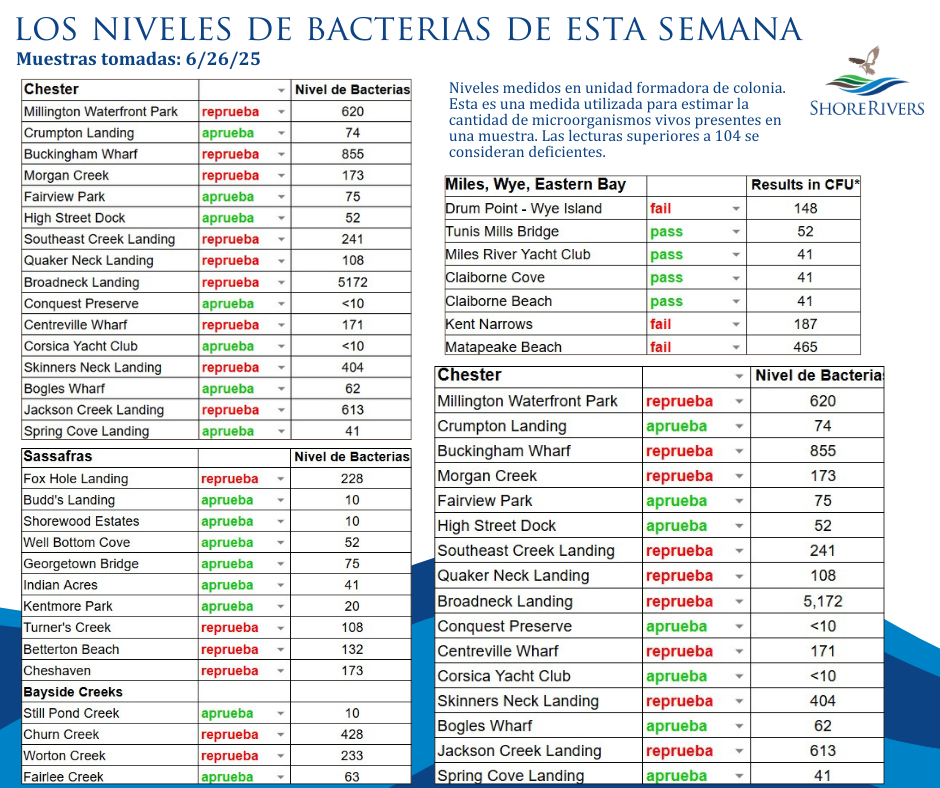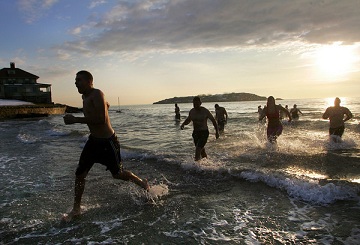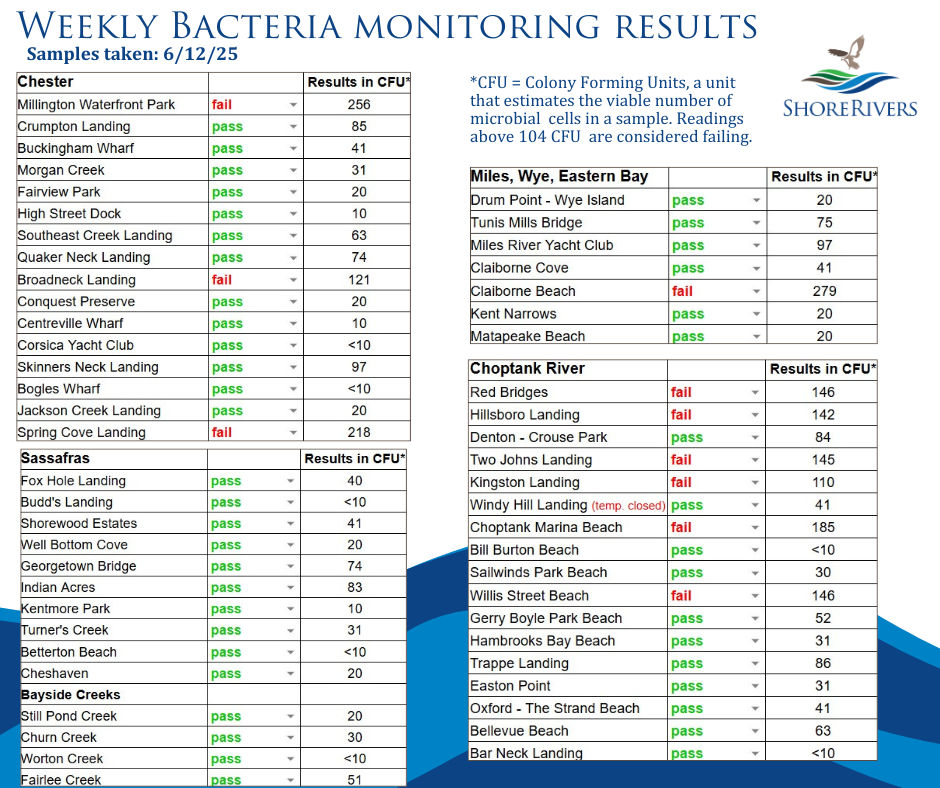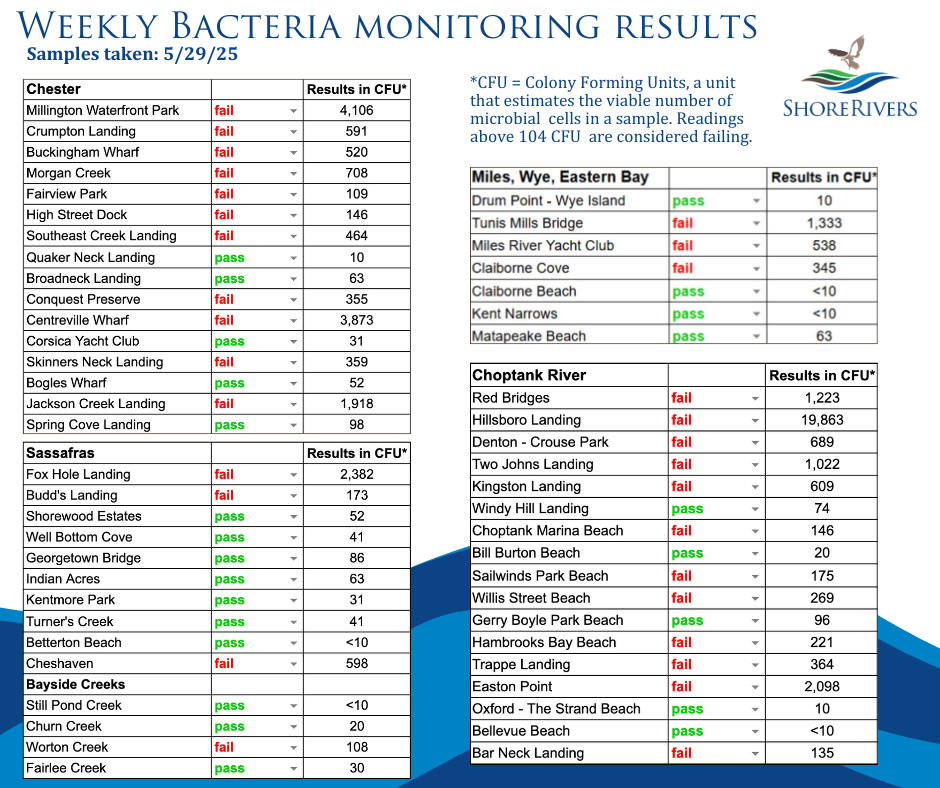

Along with summer swimming comes ShoreRivers Bacteria Monitoring season. It is advised that people not swim 24-48 hours after a major rain.
Every summer, ShoreRivers deploys a team of community scientists to monitor bacterial levels at popular swimming and boating sites, providing vital information on human health risks to the public. Their samples are then processed, according to standard scientific protocols, in ShoreRivers’ in-house labs. The program follows the Environmental Protection Agency’s standard protocols for collecting and analyzing samples. It makes the results of that testing public, informing people about current bacteria levels as they plan their recreational activities in our waterways. Results are posted every Friday, between Memorial Day and Labor Day, at shorerivers.org/swim and on both the organization’s and its individual Riverkeepers’ social media pages.
A second page, shorerivers.org/swimmable-shorerivers-espanol, was established in 2023 to share this program with the Spanish-speaking community. Additionally, 14 signs can be found at public sites around the Eastern Shore that explain the goals of the Swimmable ShoreRivers program and indicate where users can find weekly results in both English and Spanish. These signs (and the program at large) are made possible thanks to funding from the Cornell Douglas Foundation, and ShoreRivers’ Riverkeepers will continue working with local county officials to install more.













